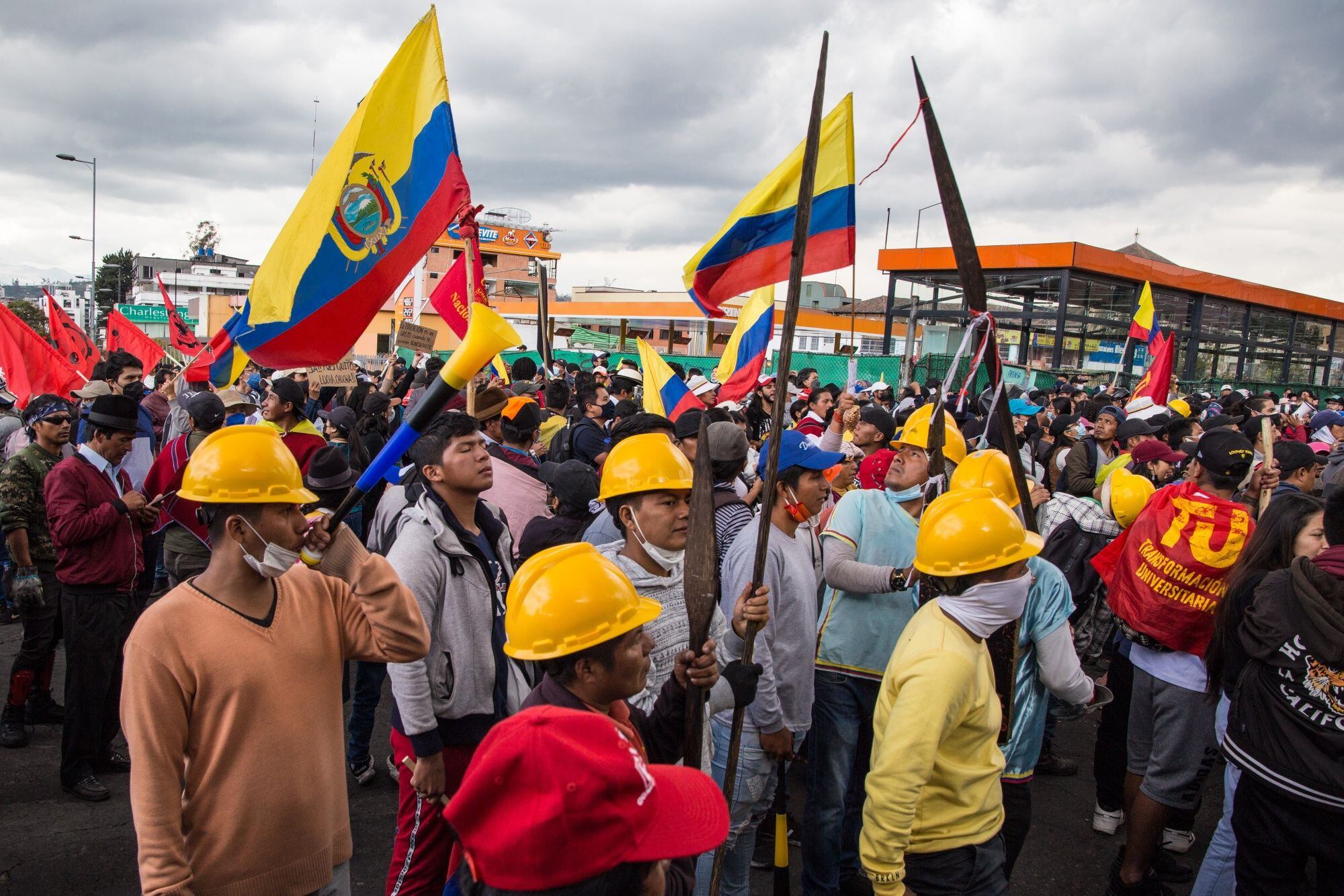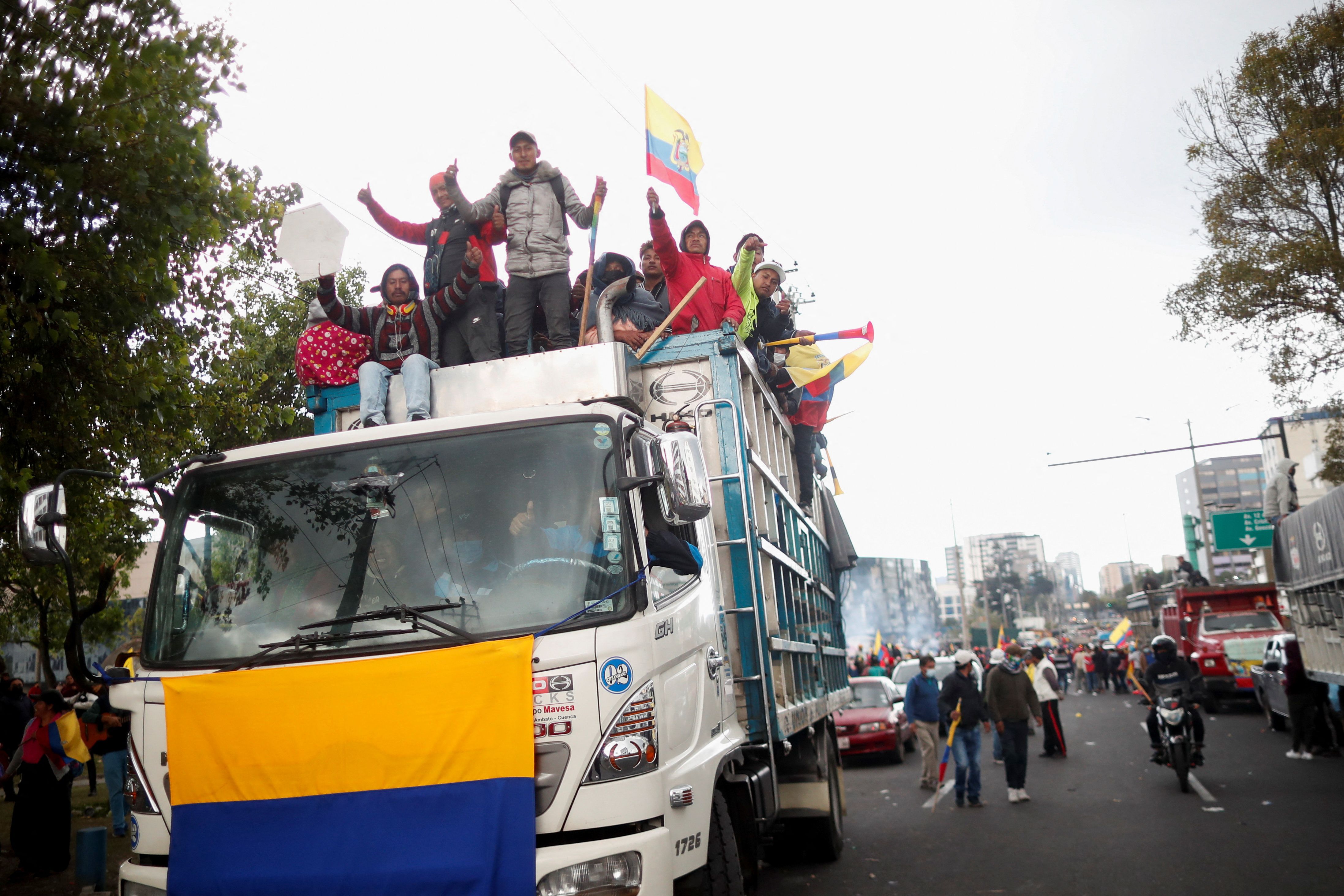Thousands of indigenous protesters left the capital of Ecuador Thursday night, after an agreement with the government to lower fuel prices and end more than two weeks of protests over the high cost of living, which left six dead.
The pact, achieved with the mediation of the Catholic Church, provides for a total reduction of 15 cents per gallon in the price of diesel and gasoline, one of the main demands of the protesters.
Look: Ecuador: State of emergency decreed in four provinces due to resurgence of protests
“We are going to suspend” the protestssaid Leonidas Iza, president of the powerful Confederation of Nationalities Natives (Conaie), organization at the head of the protests.
Conservative President Guillermo Lasso celebrated on Twitter: “We have achieved the supreme value to which we all aspire: peace in our country.”
Then, on radio and television, he said: “it is time to heal wounds, to overcome the division between Ecuadorians and unite in a single objective, to rebuild the Ecuador”. “We are going to make the countryside and rural areas a national priority,” she pointed out.
The natives they obtained a total discount of 15 cents: 5 this Thursday, additional to the 10 already transferred by the Executive on Sunday. They demanded a cut of 40 cents from the beginning of the “stoppage”.
Once the new prices take effect, a gallon of diesel will cost $1.75 and regular gasoline, $2.45.
The agreementwhich establishes the creation of a dialogue table, was signed by Iza and the Minister of Government, Francisco Jiménez at the headquarters of the Ecuadorian Episcopal Conference (CEE). At the event, the leaders natives they clasped hands in a chain and raised them in triumph.
“Surely we are tired (…) So it’s time to go back to the house,” Iza said later before about 4,000 natives that took over the House of Culture, a symbolic place for them in Quito.
Upon his departure from the capital, the leader was greeted as a hero, agreement with videos released by the organization.
Meanwhile, the aborigines dissolved the protests and left the city peacefully in buses and trucks, waving flags of Ecuador and the wiphala of the native peoples, AFP journalists confirmed.
The agreement It also provides for the repeal of a decree for the delivery of new oil fields and the reform of another to limit the extraction of minerals in territories natives and water protection zones.
The Executive must lift a state of exception that enabled the presence of the military in the streets of four provinces due to “violent acts” and shortages due to the protests.
“Walk towards reconciliation”
In a statement, the UN office in Ecuador welcomed the end of the protest and indicated that to “guarantee peace” it is essential to “address polarization and exclusion, and move towards reconciliation.”
Lasso, who took power 13 months ago, was saved Tuesday from being impeached by Congress, where a majority but divided opposition blamed him for the political crisis.
A previous attempt at negotiations between government and natives had been suspended by Lasso on Tuesday, a day after it started, after an attack on a military and police convoy in the Amazon attributed to demonstrators, with a death toll of a uniformed officer and another 12 wounded.
The demonstrations, which led to clashes with the security forces and marches of some 10,000 natives in Quito, they left at least six dead and 600 injured, including agents and protesters, and 150 detainees, according to various sources.
Another 4,000 people also mobilized outside the capital, stopping roads in 19 of the 24 provinces.
“Prepare fight days”
Despite the end of the protestsIza said that the Conaie maintains the request to target more fuel subsidies for the peasants, than before the protests they already represented 3,000 million dollars annually.
“The targeting of subsidies must reach those we need most,” said the leader indigenous in the House of Culture, where groups of natives after remaining with craft shields on the outskirts of the EEC.
The Conaie, which participated in revolts that overthrew three presidents between 1997 and 2005, said on Twitter that in ninety days it will evaluate compliance with the agreements.

Before saying goodbye to her “comrades”, Iza called them to unity to “prepare the next days of struggle”, with a view to “achieving fairer and more inclusive societies”.
Lasso, in turn, met with his ministers to “continue the coordination of the best actions for the benefit of Ecuadorians,” as he himself pointed out on Twitter.
Conaie also headed in 2019 protests against the elimination of fuel subsidies, which left eleven dead.
The natives they represent one million of the 17.7 million Ecuadorians.
Ecuador estimated losses of 50 million dollars for each day of demonstrations, which reduced oil production by less than half (from 520,000 barrels per day as of June 12) and threatened to stop all hydrocarbon activity.
Source: Elcomercio
I, Ronald Payne, am a journalist and author who dedicated his life to telling the stories that need to be said. I have over 7 years of experience as a reporter and editor, covering everything from politics to business to crime.

:quality(75)/cloudfront-us-east-1.images.arcpublishing.com/elcomercio/DTBXDCSSFNH4LP7KLADTXWDYSY.jfif)


:quality(75)/cloudfront-us-east-1.images.arcpublishing.com/elcomercio/EK6XK4Y2ZJGMZN5PJJC5VJV7ZM.jpg)
:quality(75)/cloudfront-us-east-1.images.arcpublishing.com/elcomercio/T55Y4HDFM5EMHEW46FEQXGBPMU.jpg)

:quality(75)/cloudfront-us-east-1.images.arcpublishing.com/elcomercio/TAX4OSEPCVHSHK2LA5Q3HUL2JI.png)
